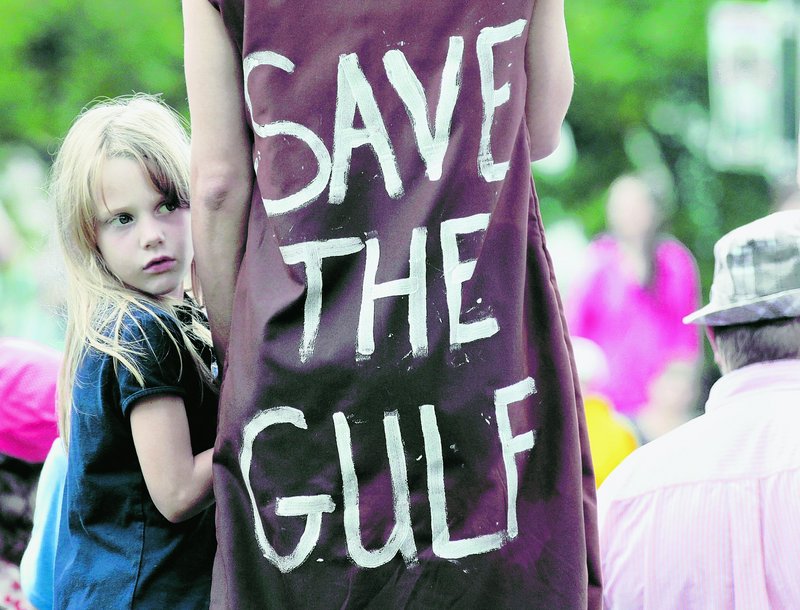As BP readied its latest fallback plan to stop oil gushing from one of its wells in the Gulf of Mexico, the Obama administration and the company warned that the crude could continue flowing until August, compounding threats to coastal wetlands, fisheries and beaches.
White House energy and climate adviser Carol Browner declared Sunday that the oil spill was “probably the biggest environmental disaster we’ve ever faced in this country” and said that “we are prepared for the worst.” On the CBS show “Face the Nation,” she said that the “American people need to know that it is possible we will have oil leaking from this well until August when the relief wells will be finished.”
Those two wells, which BP began drilling early this month, are expected to intersect the damaged one and seal it near the reservoir far below the seafloor. The first has reached 7,000 feet, and second has reached a depth of 3,500 feet below the seafloor, but progress gets slower the deeper the wells go. With the arrival of hurricane season Tuesday, the drilling could be slowed if the rigs need to be evacuated during storms.
The grim assessment came in the wake of the failure last week of BP’s “top kill” effort to stop the flow of oil from the damaged well by shooting heavy drilling mud into the hole.
BP managing director Bob Dudley, who also made the rounds of Sunday morning shows, said on ABC “This Week” that “the next step is to make sure that we minimize the oil and pollution going into the gulf.” He added: “The main thing now is to contain it.”
BP plans to saw off a bent and broken pipe attached to the five-story tall blowout preventer that sits over the well. The company will then lower a new apparatus that would funnel oil and gas to vessels on the sea surface. But until the new apparatus is in place, cutting the riser pipe will temporarily increase the flow of oil into the sea by 10 percent to 20 percent, the amount that is now being captured by a device BP inserted farther up the pipe.
Dudley expressed optimism about the latest fallback plan — the fourth so far — saying on CBS, “With this, we think we can contain the majority of the oil and gas.”
Both BP and the Obama administration were also trying to contain the rising tide of public frustration as the oil spill comes to the messy end of its sixth week.
Drilling experts said they feared that BP’s effort last week to stop the flow of oil and gas with heavy drilling mud might have done further damage both to the well and the blowout preventer, possibly complicating the next effort to capture the oil and gas and bring them to surface vessels.
Some drilling experts said that the now-abandoned “top kill” effort failed over the weekend because the force of the oil and gas pushing up from the reservoir 13,000 feet below the seafloor was so great that it had pushed most of the drilling mud out through the blowout preventer and into the sea.
Send questions/comments to the editors.



Success. Please wait for the page to reload. If the page does not reload within 5 seconds, please refresh the page.
Enter your email and password to access comments.
Hi, to comment on stories you must . This profile is in addition to your subscription and website login.
Already have a commenting profile? .
Invalid username/password.
Please check your email to confirm and complete your registration.
Only subscribers are eligible to post comments. Please subscribe or login first for digital access. Here’s why.
Use the form below to reset your password. When you've submitted your account email, we will send an email with a reset code.